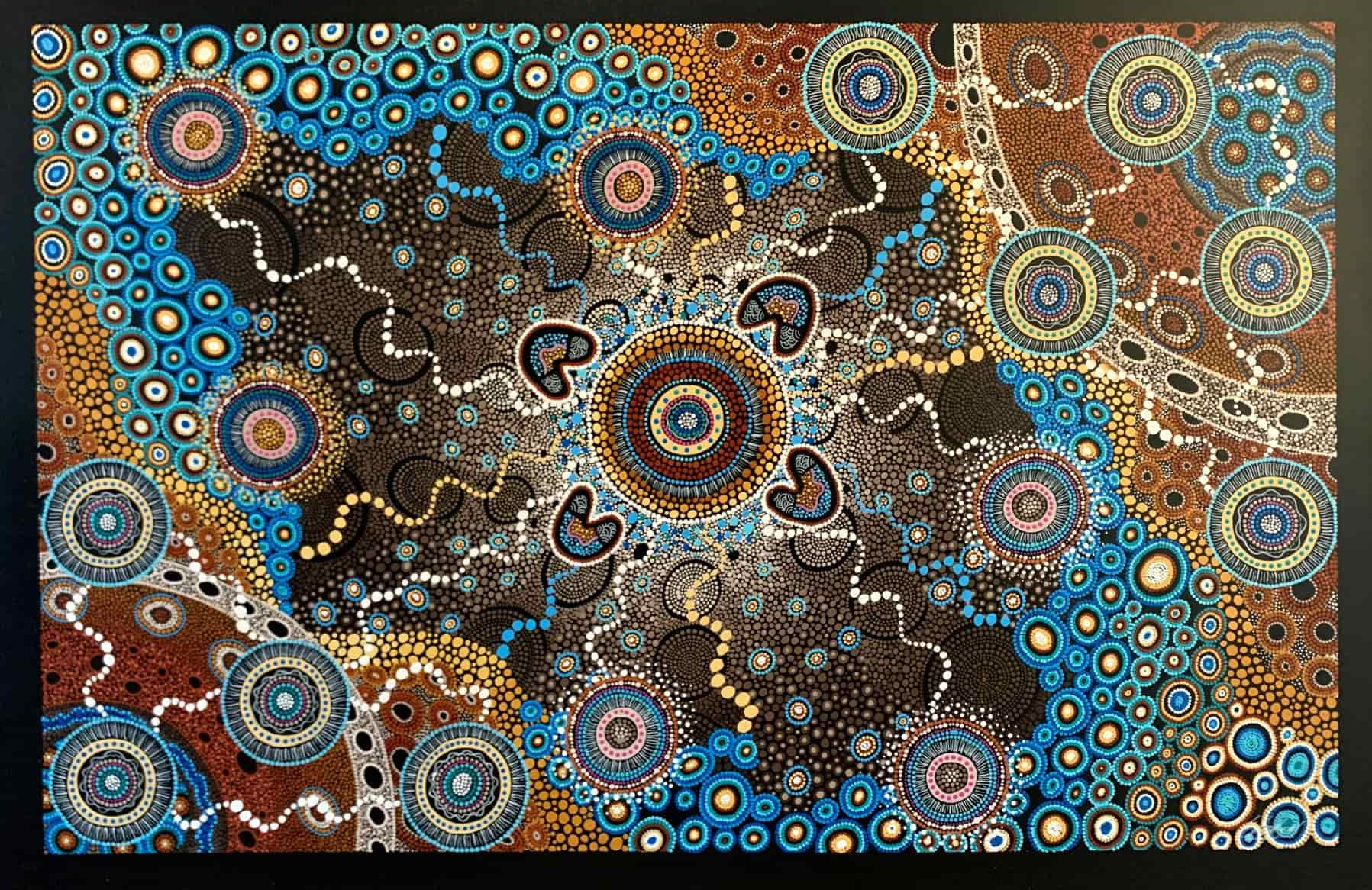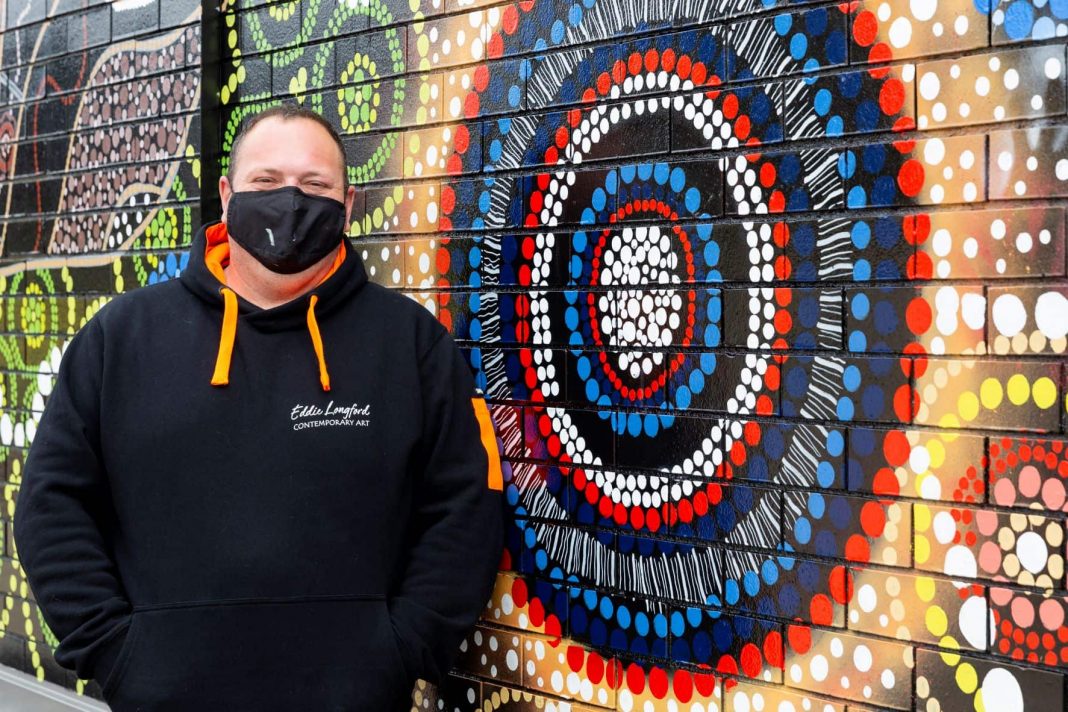Aboriginal artists across Ngunnawal country use their paintings to reflect their own personal culture, identity, and healing journeys, while teaching all people to embrace Australia’s traditional owners. In this series, we speak with five artists living on Ngunnawal country who share their individual stories of growing up on country, cultural connection and the importance of reconciliation.
Talented artist Eddie Longford has shared his story with the Canberra Daily.
A proud Wiradjuri man, born and raised on Ngunnawal country, Mr Longford first started working in social services before moving into government, but always knew deep down that art was his passion.
“It started as mental health relief and generated into a small business that represents the country I live on and the country I am from,” Mr Longford said.
“My contemporary Indigenous style is a mix of traditional and non-traditional dots, line work, traditional colours and non-traditional colours all mixed together.”
He said he’s always been involved with art in some way and three years ago while getting a painting for himself framed, he noticed people were liking his art. So, he pulled 10 paintings out of a box in the shed and all of them sold.
“I like painting for commissions for families about their stories in a traditional Indigenous style like a family tree, but it’s something that’s significant to the family I’m painting for. Most of the time they’re not for Indigenous people, but it’s all about people coming together to create their own family,” Mr Longford said.

“It’s an eastern style of painting. In my opinion, Eastern Indigenous people were colonised first and so we’ve had to come back and reestablish our culture, therefore reestablishing what our art style is and what it represents.”
One of Mr Longford’s favourite type of artworks to paint is murals for local Ngunnawal schools, as he see’s it as a way of sharing knowledge and culture, and breaking down barriers.
“The mural I’ve just done represents the school and its place on Ngunnawal country, which is really important for me to share. I do sessions with the children afterwards to walk through what it is and what the symbols represent, and then the kids can take home their artwork we created and share culture with their family,” he said.
“I see it as reconciliation. I paint some big pieces that are bright and draw the eye’s attention, so it’s a conversation point to change people’s perceptions.
“My main message is just about breaking down relationships between non-Indigenous and Indigenous people, and for non-Indigenous people to not be scared to embrace our culture.”
Get all the latest Canberra news, sport, entertainment, lifestyle, competitions and more delivered straight to your inbox with the Canberra Daily Daily Newsletter. Sign up here.



